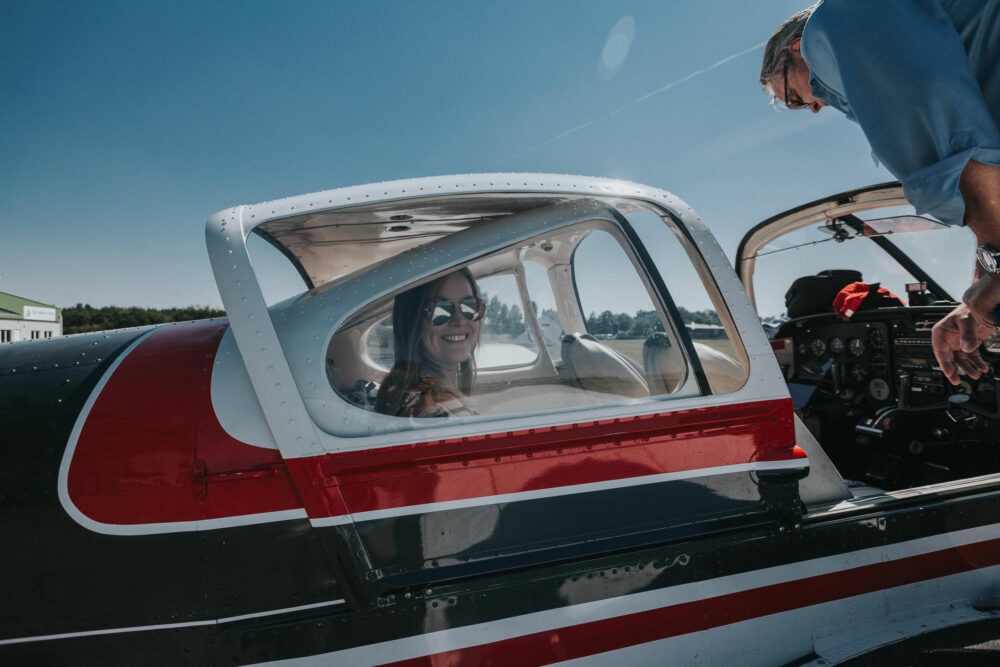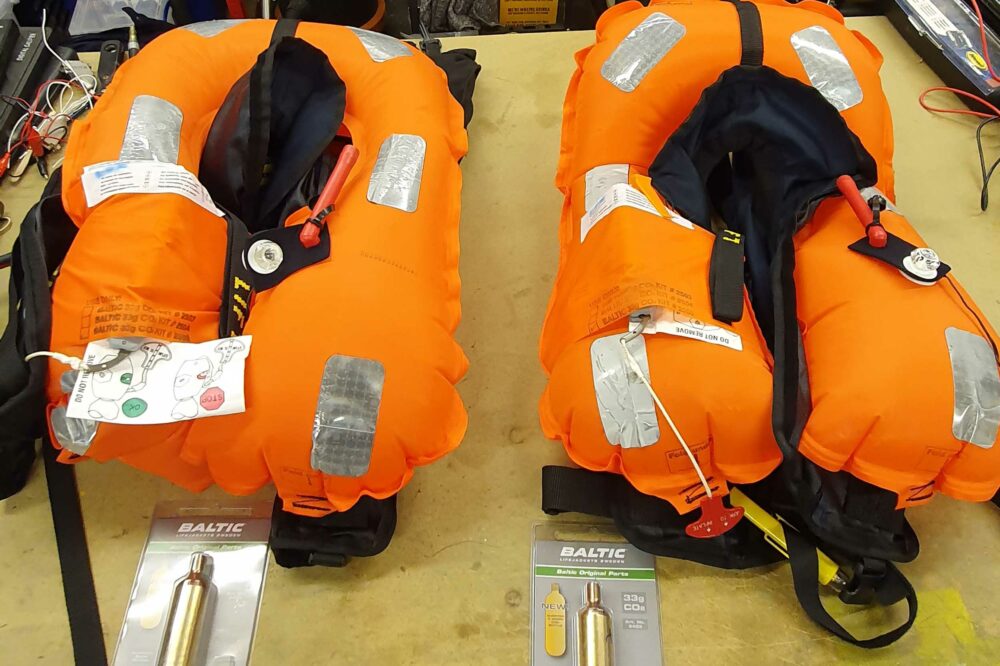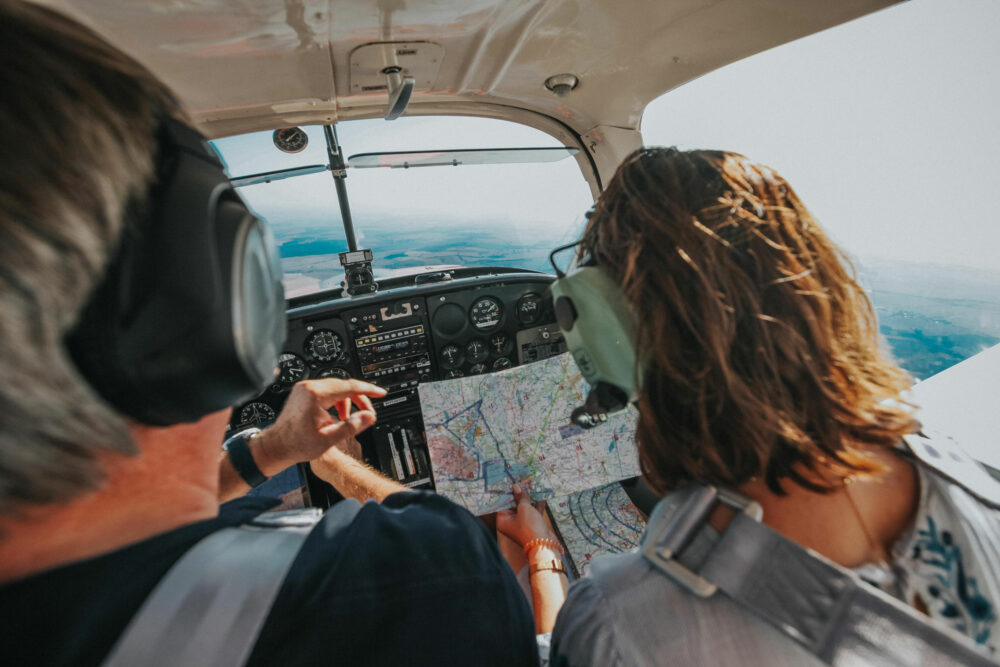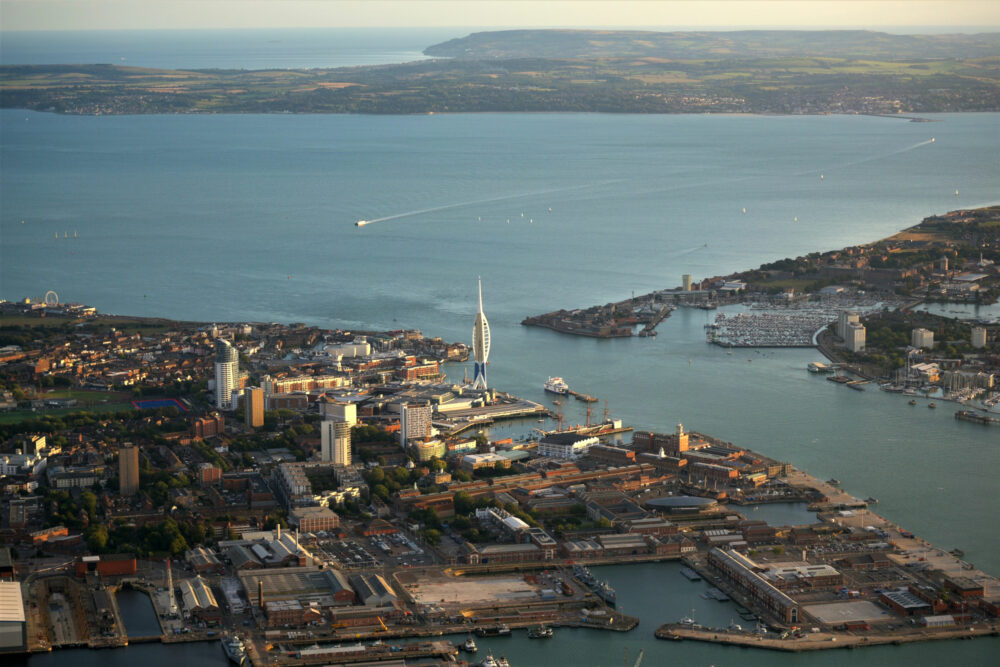2
Safety
Express how safety is a priority and taken seriously in General Aviation. Depending on the airfield, they may need to wear a high visibility jacket when airside.
If the flight is over the sea (definitely if beyond glide distance from land), they will need to wear life jackets. Help them put the life jackets on and show how the jackets would be inflated if they were in the water. Stress that they must not operate their jacket inside the aircraft as it would stop them exiting the aircraft.
If you are carrying a dinghy then cover the operation of the dinghy – including retrieval, clearing the aircraft and inflation.
Moving on, cover the importance of look-out and encourage reporting any sighting of other aircraft. Describe the clock code and give some examples.
Before you get near the aircraft describe how your passengers should behave on the airfield. Stress the dangers of propellers and aircraft. Ensure that passengers are aware that they cannot just wander around on the airfield and should accompany you to your aircraft.
When you approach your aircraft ensure the passengers approach from the back and avoid going near the propeller. Be aware if they get their phones out to start taking photos as they will usually gather by the front of the aircraft.
In summary, my suggested toolkit of safety briefing points given before going airside could include:
- Beware of parked aircraft, moving aircraft and keep away from their propeller(s) even if not running.
- You will need to wear a high visibility jacket when airside.
- Report any aircraft sightings to me ideally using the clock code – such as 3 o’clock if on our right, or 9 o’clock if on our left.
- R/T – if I’m talking to air traffic please do not interrupt unless for safety reasons. Sometimes I will say ‘Quiet’, as I may be listening to air traffic.
- Any questions?
If flying over the sea:
- We will have to wear life jackets. Let me help you put them on and if you have to operate them then we’d pull this toggle (just point it out!).
- It is better to put them on before getting in the aircraft and keep them on until we land.
- Do not inflate inside the aircraft.
- If carrying a dinghy – in the event of ditching, we will retrieve the dinghy from the aircraft and inflate it once it is clear.
Let’s get out to the aircraft and fly.










